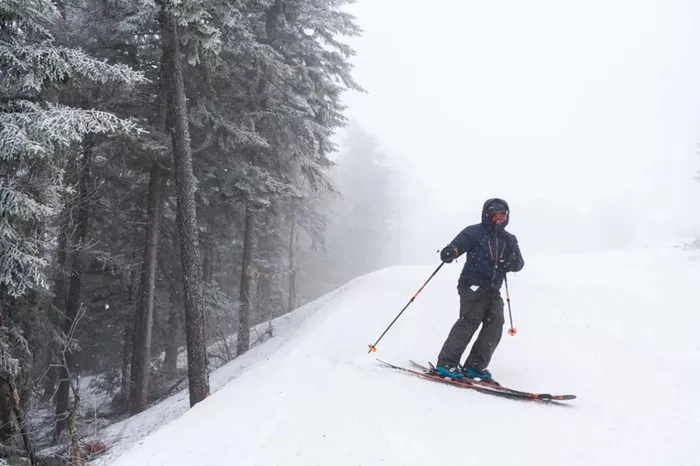Freestyle skiing is an exhilarating winter sport that combines skiing with acrobatics and creativity. It encompasses various disciplines, including aerials, moguls, slopestyle, and halfpipe, each requiring specialized equipment to enhance performance and safety. As the sport continues to evolve, so does the technology and design of the gear used by athletes. This article provides a detailed overview of the essential equipment for freestyle skiing, including skis, boots, bindings, protective gear, and accessories.
Skis
Types of Skis
Freestyle skis are uniquely designed to cater to the specific needs of different disciplines within the sport. Here are the main types:
Twin-Tip Skis: These skis have both ends bent upwards, allowing skiers to ski forwards and backwards (switch). They are popular in slopestyle and halfpipe events due to their versatility and ability to handle various tricks.
Mogul Skis: Shorter than traditional alpine skis, mogul skis provide better control over bumps and turns. They are designed for quick edge-to-edge transitions, essential for navigating through moguls.
Aerial Skis: These are typically lighter and shorter than standard skis, allowing for better maneuverability during jumps. Aerial skiers require precise control in the air, making these skis crucial for their performance.
All-Mountain Freestyle Skis: These skis offer a balance between park performance and off-piste capabilities. They typically feature a wider waist for stability on varied terrain while still allowing for tricks in the park.
Key Features
When selecting freestyle skis, consider the following features:
Waist Width: Freestyle skis generally range from 85mm to over 100mm in waist width. A narrower waist enhances agility in the park, while wider skis provide better flotation in powder.
Rocker Profile: Many freestyle skis incorporate rocker technology in the tips and tails. This design improves maneuverability for tricks and landings while maintaining grip on hardpack snow.
Length: The appropriate ski length is often around eye level. Shorter skis facilitate spins and tricks, while longer skis provide stability at high speeds.
SEE ALSO: Where Can I Ski Cheaply in Europe?
Bindings
Bindings are critical components that connect the skier’s boots to the skis. For freestyle skiing, bindings must be adjustable and robust enough to withstand the stresses of jumps and tricks.
Types of Bindings
Alpine Bindings: Standard bindings suitable for most skiing styles but may not provide the flexibility needed for advanced freestyle maneuvers.
Freestyle Bindings: Designed specifically for freestyle skiing, these bindings offer a wider range of motion and are often lighter to facilitate jumps and tricks.
Mounting Position
The mounting position of bindings is crucial. For freestyle skiing, bindings are typically mounted slightly further back on the ski to enhance balance during jumps and landings.
Boots
Freestyle ski boots differ significantly from traditional ski boots. They are designed for flexibility and comfort while providing adequate support during high-impact landings.
Key Characteristics
Flexibility: Freestyle boots usually have a softer flex compared to alpine boots. This allows skiers to absorb shocks from landings more effectively.
Fit: A proper fit is essential. Boots should be snug without causing discomfort. Many skiers opt for custom fitting to ensure optimal performance.
Cuff Height: Higher cuffs provide more support during aggressive turns but may limit mobility. Finding a balance between support and flexibility is key for freestyle skiers.
Protective Gear
Safety is paramount in freestyle skiing due to the high-risk nature of the sport. Various protective gear is recommended or required depending on the event.
Essential Protective Equipment
Helmet: A well-fitted helmet is mandatory across all freestyle events to protect against head injuries. Modern helmets are lightweight yet durable, often featuring removable liners for added comfort.
Goggles: Goggles protect against UV rays, wind, and snow while improving visibility on the slopes. Different lens tints can be chosen based on weather conditions.
Body Armor: Non-protruding body protection (back pads, hip pads) is recommended to cushion impacts during falls without restricting movement.
Knee Pads: Especially important for mogul skiers, knee pads help protect against impacts when landing or navigating through bumps35.
Ski Suits
Ski suits play a vital role in maintaining warmth and flexibility while skiing. They must be designed with performance in mind.
Design Features
Material: Ski suits should be made from breathable yet insulating materials that allow freedom of movement while keeping skiers warm in cold conditions.
Fit: A snug fit is essential for minimizing drag during jumps while ensuring comfort throughout various movements.
Knee Patches: In mogul skiing, suits often feature knee patches that help judges assess technique during competitions by highlighting knee control.
Accessories
Accessories enhance comfort and performance on the slopes.
Important Accessories
Connection Cord: This component connects the ski boot to the binding securely; improper connection can lead to instability during jumps.
Ski Poles: While some freestyle skiers choose not to use poles, they can aid in balance and turning when necessary.
Conclusion
Freestyle skiing is a dynamic sport that requires specialized equipment tailored to various disciplines within it. From choosing the right skis with appropriate features like waist width and rocker profile to ensuring proper fit with boots and protective gear, each component plays a crucial role in performance and safety. Understanding this equipment allows enthusiasts and athletes alike to enhance their skills while enjoying this thrilling sport.
Related topics:
- Where to Stay While Skiing in Alta?
- How Much Does Heli Skiing Cost in Canada?
- Where Can I Rent Cross-Country Ski Equipment in Aspen?

